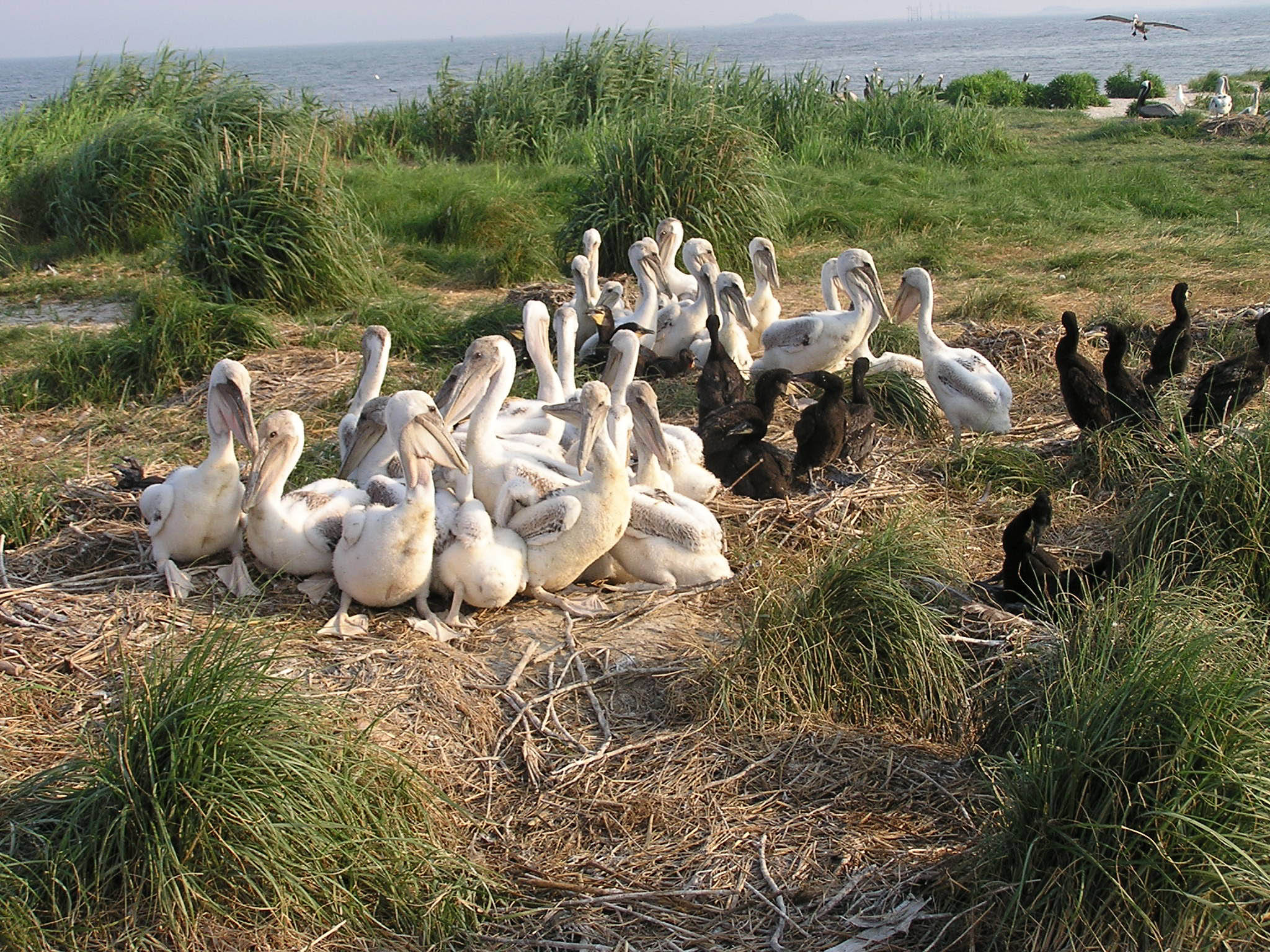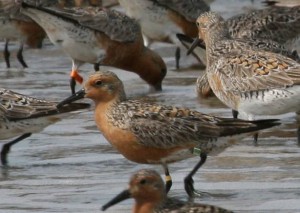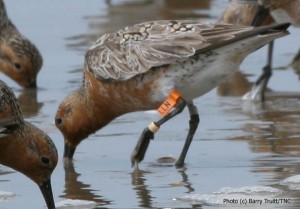Red knot stopover ecology on Va's Barrier Islands
2007 Golden-winged Warbler Results
June 16, 2008
Estimating fish demand by waterbirds in the Chesapeake Bay
October 1, 2008
Written by Bryan Watts
June 17, 2008

Banded and flagged red knots foraging on the Eastern Shore of Virginia. Photo by Barry Truitt/TNC.
Over the past 20 years, the highly migratory population of red knot (Calidris canutus rufa) within North America has declined by approximately 90%. Concern for this species led to an application to the U.S. Fish and Wildlife Service for fast track consideration for federal listing under the Endangered Species Act and a large-scale investigation of conflicts between migrants and the horseshoe crab industry. Most of the conservation efforts to date have focused on Delaware Bay. In the mid-1990s, three years of aerial surveys conducted by CCB in collaboration with The Nature Conservancy showed that numbers of red knots moving through the barrier islands of Virginia between mid-May and the second week of June reach 8,000-10,000. Surveys conducted from 2005-2008 showed that similar numbers of knots continue to stage migration along the islands suggesting that the Virginia Barrier Islands may have more significance to the species than previously believed. However, unlike the birds staging in Delaware Bay, birds using the barrier islands do not depend on horseshoe crabs. There are many questions yet to be addressed for birds staging in Virginia that may have broad implications for the future of this species.

Flagged red knot foraging in the surf, Eastern Shore Barrier Islands, VA. Photo by Barry Truitt/TNC.
During the spring of 2007, a team of CCB field biologists conducted a project to investigate stopover duration along the barrier islands focusing on knots that had been flagged throughout the western hemisphere. The team worked on seven barrier islands throughout the migration period scanning flocks of red knots for bands and flags. More than 18,000 birds were scanned including nearly 650 that were marked. 277 individual birds were identified from flags that had been banded in Argentina, Brazil, Chile, the Canadian Arctic, Delaware Bay, and Florida. Further work is planned that will continue to investigate the significance of this site within the red knot life cycle.



